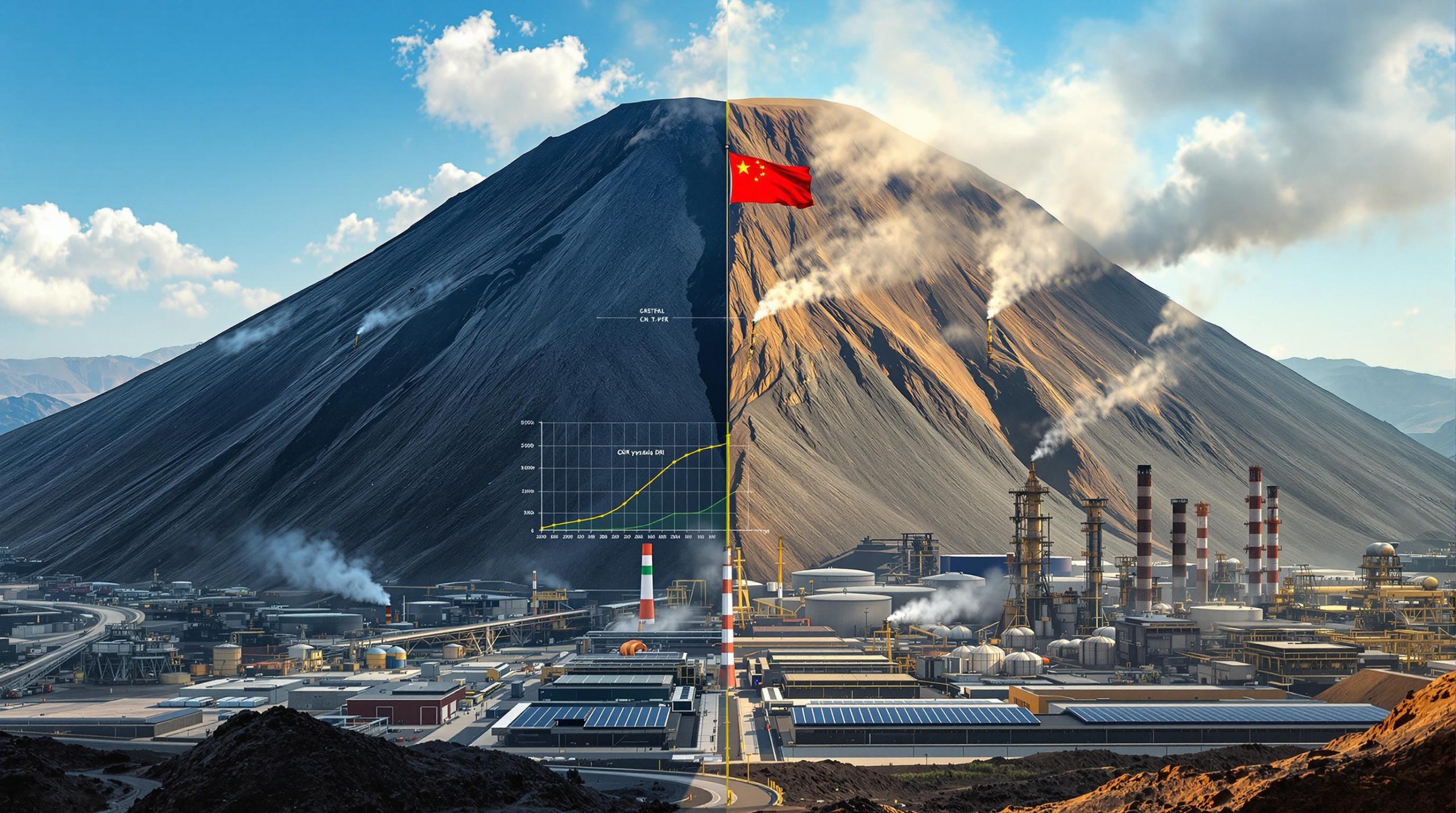Why Experts Are Bullish on Fortescue Shares: Investment Analysis
While most large fund managers have shied away from Fortescue Metals Group Ltd (ASX: FMG) in recent years, a notable contrarian position is emerging among investment experts. This shift in sentiment comes at a time when iron ore price trends have created what some see as a compelling value opportunity in one of Australia's mining giants.
What Makes Fortescue Shares Attractive to Fund Managers?
The Contrarian Investment Opportunity
Michael Bell, chief investment officer of Solaris Investment Management, has built what he describes as "a pretty decent position" in Fortescue shares. This move is particularly significant as research from The Australian Financial Review revealed that only a single fund manager disclosed a substantial position in the company last year among actively managed Australian equity funds.
"We watched Fortescue go near $30 last year when iron ore was at $140 a tonne, and it was too expensive for us at those levels," Bell explained, highlighting the disciplined value approach that informed his investment decision.
Price Correction Creates Value
The iron ore decline analysis from US$140 per tonne in early 2024 to around US$90 per tonne by mid-2025 created a significant buying opportunity for value-focused investors. This price correction drove Fortescue shares to multi-year lows, with the stock trading between $15-16 during this period—a substantial discount from its previous highs near $30.
Bell noted that this price point made the company particularly attractive: "The balance sheet is great. The management churn has slowed a lot. So at around $15 to $16, it started looking pretty good."
Recent Performance Metrics
Fortescue shares have demonstrated remarkable recovery strength since their April 2025 lows. The stock has gained an impressive 35.2% since late June 2025 following the company's record-setting fourth-quarter results. Currently trading around $19.87, the shares represent a 9.4% increase year-over-year, significantly outperforming the broader S&P/ASX 200 Index in recent months.
This performance recovery indicates market confidence is returning to Fortescue despite the ongoing volatility in iron ore prices, suggesting investors are recognizing the company's fundamental value proposition.
How Does Fortescue's Dividend Yield Compare to Other ASX Stocks?
Attractive Dividend Profile
One of the most compelling aspects of Fortescue shares is the exceptional dividend yield. The company paid a total of $1.39 in fully franked dividends over the past 12 months, representing a trailing yield of 7.0% at current prices. This places Fortescue among the highest dividend-yielding stocks in the Australian market.
For income-focused investors, this yield presents a significant opportunity in the current economic environment where many other blue-chip companies are offering substantially lower returns.
Dividend Sustainability
Expert analysis suggests Fortescue's dividend payments remain sustainable even with iron ore prices at current levels. Bell's assessment indicates that with iron ore maintaining a price floor around US$90 per tonne, the company can continue supporting its attractive dividend program.
This sustainability is underpinned by Fortescue's efficient operations and disciplined capital management approach, which have enabled the company to generate substantial free cash flow even during periods of commodity price volatility.
Franking Credits Enhancement
The fully franked nature of Fortescue's dividends provides an additional tax advantage for Australian investors, effectively increasing the after-tax return compared to unfranked alternatives. For investors in higher tax brackets, this franking benefit can significantly enhance the effective yield.
This tax efficiency further distinguishes Fortescue from many international alternatives and even some domestic dividend stocks that offer partially franked or unfranked distributions, creating additional appeal for tax-conscious investors.
What Fundamental Changes Have Improved Fortescue's Outlook?
Strategic Refocusing
A significant shift in Fortescue's strategic direction has contributed to renewed investor confidence. The company has pulled back on its previously ambitious green hydrogen goals, which had raised concerns about excessive capital expenditure in unproven offshore markets.
Bell specifically noted this shift, stating: "At the time, there was too much hubris and governance concerns, particularly with the string of management departures, and they were planning to invest a lot of shareholders money in offshore jurisdictions that we thought posed way too much risk."
This recalibration has been viewed positively by market analysts who had previously expressed concerns about capital allocation and return on investment from these initiatives.
Management Stability
The company has addressed earlier governance concerns that had deterred some investors. "The management churn has slowed a lot," Bell observed, pointing to a more stable executive environment after a period of high-profile departures that had previously raised red flags among institutional investors.
This improved stability at the leadership level provides greater confidence in strategic continuity and execution capability, factors that are particularly important for companies operating in the volatile resources sector.
Balance Sheet Strength
Fortescue maintains what Bell describes as a "great" balance sheet, providing financial flexibility and reducing risk. This strong financial position enables the company to weather commodity price volatility while continuing to fund both operational requirements and shareholder returns.
The company's relatively low debt levels compared to some peers in the mining sector create additional resilience against market downturns, making it better positioned to navigate through cyclical commodity price fluctuations.
What Factors Support Iron Ore Price Stability?
Price Floor Analysis
Expert iron ore forecast insights suggest a sustainable floor for iron ore prices around US$90 per tonne, with current prices hovering above US$104 per tonne. This price level is considered sufficient to support Fortescue's operational profitability and dividend payments while providing potential upside if prices strengthen further.
Bell's assessment of this price floor is particularly noteworthy given the commodity's recent volatility, as it suggests the worst of the price correction may have already occurred.
Supply-Demand Dynamics
While iron ore experienced significant price volatility in 2024-2025, the fundamental supply-demand equation appears to be stabilizing. The price correction from US$140 to current levels represents a more sustainable equilibrium that balances global production capacity with steel industry demand.
Industry analysts note that major infrastructure projects in developing economies continue to drive demand, while supply disruptions and quality concerns from some producers have helped maintain price support.
China Market Influence
As the world's largest iron ore consumer, China's economic activity and steel production levels remain crucial factors in price stability. Recent indicators suggest surging iron ore demand to maintain price support above the critical US$90 per tonne threshold identified by analysts.
While China's property sector challenges have created headwinds, infrastructure stimulus and manufacturing activity continue to support steel demand, providing a floor for iron ore consumption that benefits major producers like Fortescue.
What Risks Should Investors Consider Before Buying Fortescue Shares?
Commodity Price Volatility
Despite current stability, iron ore prices remain subject to significant fluctuations based on global economic conditions, particularly Chinese industrial activity. Any substantial decline below the US$90 price floor could pressure both profitability and dividend sustainability.
Investors should recognize that while expert analysis suggests a price floor, commodity markets can be unpredictable, and extended periods below this threshold would likely impact Fortescue's financial performance.
Green Energy Transition Challenges
While Fortescue has scaled back its most ambitious green hydrogen initiatives, the company remains committed to energy transition projects. The execution risk and capital requirements of these ventures continue to represent potential challenges to financial performance.
Balancing traditional mining operations with newer green energy initiatives represents both an opportunity and a risk, as the company navigates evolving technologies and uncertain market demand for these emerging solutions.
Governance Considerations
Although management stability has improved, Fortescue's governance structure—with founder Andrew Forrest maintaining significant influence—presents both opportunities and risks. Investors should monitor decision-making processes and capital allocation priorities for alignment with minority shareholder interests.
The strong leadership vision that has driven Fortescue's historical success must be balanced with appropriate corporate governance mechanisms to ensure all shareholders' interests are protected in strategic decisions.
How Does Fortescue Compare to Other ASX Mining Stocks?
Dividend Yield Advantage
Fortescue's 7.0% fully franked dividend yield significantly outpaces most other large-cap ASX mining stocks, making it particularly attractive for income-focused investors seeking exposure to the resources sector.
This yield premium provides a compelling case for investors looking to maximize income returns while maintaining exposure to potential commodity price upside.
Valuation Metrics
At current price levels around $19.87, Fortescue trades at a more attractive valuation multiple than during its peak near $30 in 2024. This improved value proposition has contributed to renewed investor interest despite ongoing sector challenges.
The significant discount from previous highs, combined with the company's demonstrated operational efficiency, creates what some analysts view as an appealing risk-reward profile for new investors.
Diversification Efforts
Unlike some pure-play iron ore producers, Fortescue has begun diversifying its business model through strategic initiatives in energy transition and other minerals. This approach may provide longer-term resilience compared to competitors with more concentrated commodity exposure.
While the company has wisely scaled back its most ambitious green hydrogen projects, its continued strategic investments in diversification could help reduce dependency on iron ore prices over time.
FAQ: Key Questions About Investing in Fortescue
When did Fortescue shares hit their recent low point?
Fortescue shares reached multi-year closing lows on April 9, 2025, before beginning their recovery following strong operational results in late June.
What dividend yield does Fortescue currently offer?
Based on trailing 12-month dividends of $1.39 per share, Fortescue offers a fully franked dividend yield of approximately 7.0% at current share prices.
Who is Michael Bell and why is his position in Fortescue significant?
Michael Bell is the chief investment officer of Solaris Investment Management. His substantial position in Fortescue is notable because analysis showed only a single fund manager disclosed a significant stake in the company last year, making his bullish stance relatively uncommon among institutional investors.
What iron ore price is considered the floor for Fortescue's profitability?
Expert analysis suggests US$90 per tonne represents a sustainable floor price that would allow Fortescue to maintain profitability and support its dividend program.
Investment Outlook: Why This Expert Is All In On Fortescue Shares
Long-Term Potential Beyond Current Yields
While the immediate attraction of Fortescue shares centers on its impressive dividend yield, Bell's investment thesis extends beyond short-term income returns. The strategic repositioning and management stabilization suggest potential for both capital appreciation and sustained dividend payments.
As Bell noted in his analysis, the combination of a strong balance sheet, improved management stability, and more disciplined capital allocation creates a foundation for sustainable value creation over multiple market cycles.
Value Investing Principles in Action
Bell's approach to Fortescue represents classic value investing principles: identifying quality assets trading at a discount due to temporary market conditions. By establishing positions when shares traded between $15-16, his fund positioned itself to benefit from both the substantial dividend yield and potential share price recovery.
This patient, contrarian approach highlights the importance of looking beyond market consensus when seeking exceptional investment opportunities in cyclical industries like mining.
Balancing Income and Growth Potential
For investors considering Fortescue shares, the current proposition offers an unusual combination of high income and potential capital growth. While dividend-focused stocks often lack significant growth prospects, Fortescue's position in the iron ore market and strategic initiatives create multiple pathways for shareholder returns.
As Bell's investment decision demonstrates, sometimes the most compelling opportunities emerge when the market's focus on short-term challenges obscures the longer-term value proposition of fundamentally sound businesses. The Australian iron ore leadership position of companies like Fortescue further strengthens the case for long-term investment in this sector.
Ready to Spot the Next Mining Opportunity Before the Market?
Discovery Alert's proprietary Discovery IQ model delivers instant notifications on significant ASX mineral discoveries, transforming complex data into actionable investment insights that give you a crucial market advantage. Explore how major mineral discoveries can generate substantial returns by visiting the Discovery Alert discoveries page and start your 30-day free trial today.




